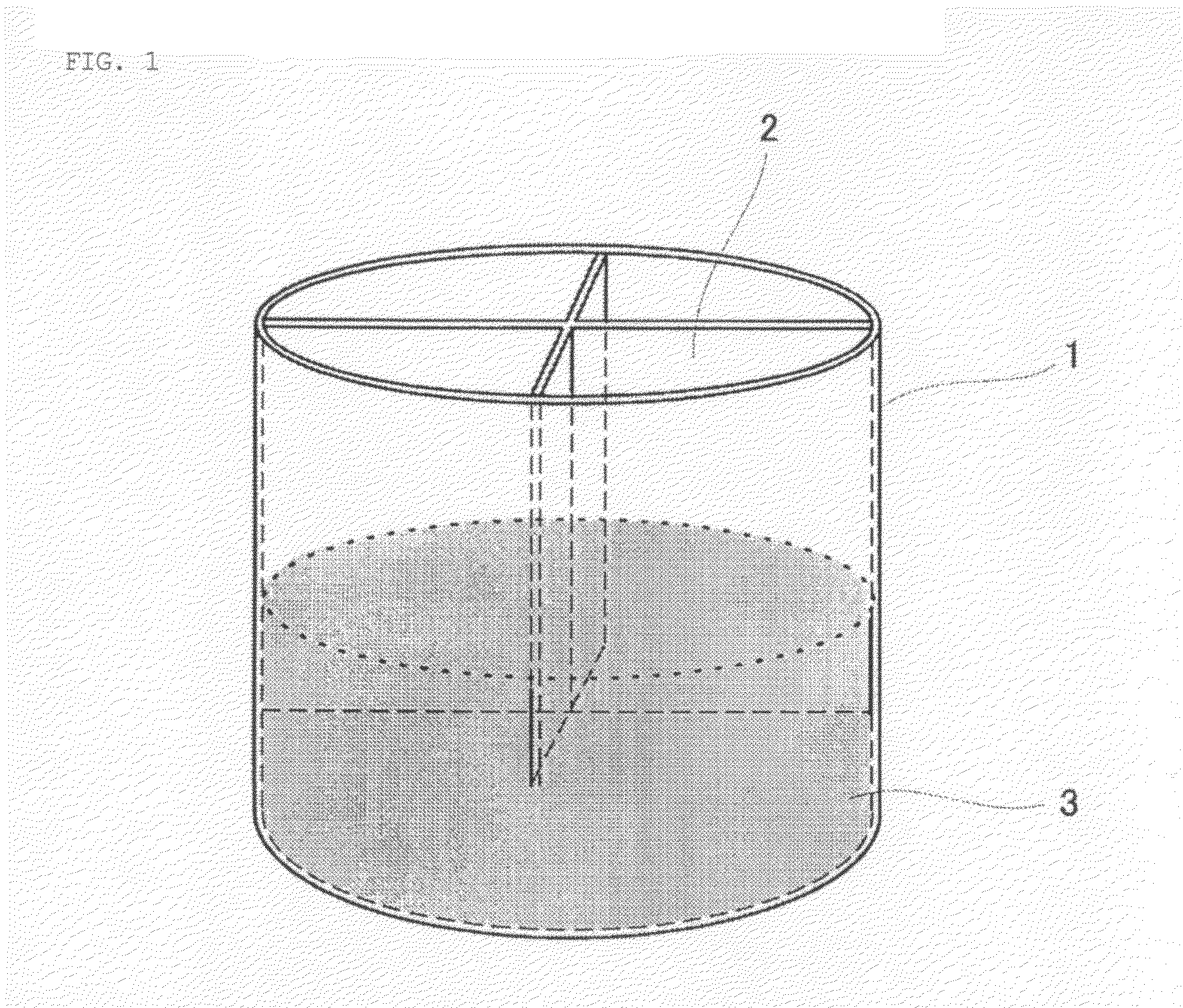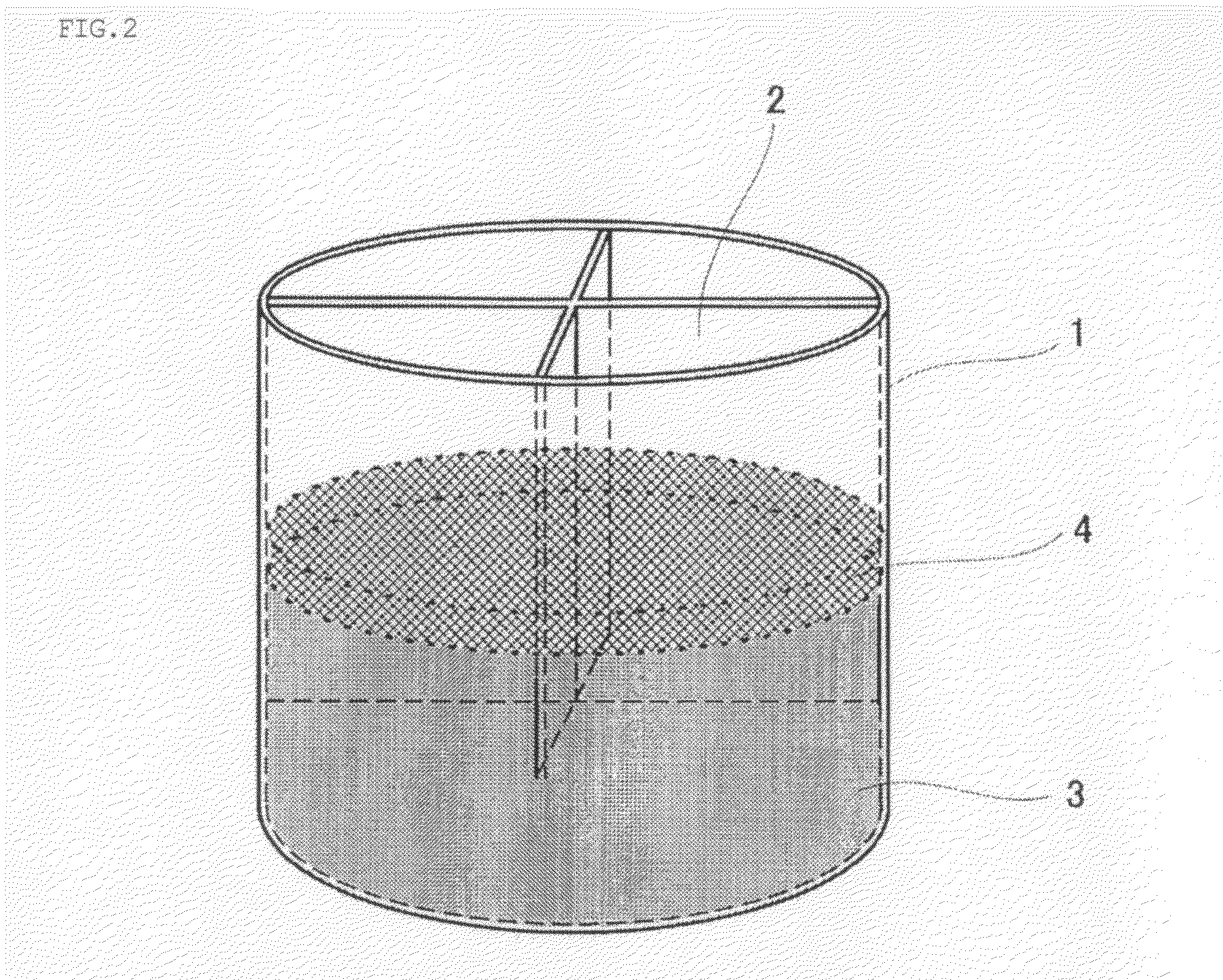Process for producing molten iron
a technology of molten iron and process, which is applied in the direction of molten salt/metal gasification, furnaces, manufacturing converters, etc., can solve the problems of increasing capital-investment expenses, large amount of molten iron splashes out of the system, and inconvenient blast furnace process, so as to improve production efficiency and production efficiency. , the effect of saving energy
- Summary
- Abstract
- Description
- Claims
- Application Information
AI Technical Summary
Benefits of technology
Problems solved by technology
Method used
Image
Examples
example 1
[0098]A thermometer is positioned at the lower portion of an exhaust gas-collecting device that is located at the upper portion of the mouth of a LD converter that is capable of treating 230 t of molten steel. The temperature of the gas to be discharged from the LD converter can be measured using the aforementioned thermometer. 100 t of molten iron was fed into the LD converter.
[0099]A gas mixture containing a fuel gas and a combustion-supporting gas for heating molten iron was blown from the upper portion of the molten iron through a water-cooled lance provided with a gas blowing channel including a de Laval nozzle at the tip. LPG and highly pure oxygen gas were used as a fuel gas and a combustion-supporting gas, respectively, and the ratio of the gases (volume ratio) was determined as LPG:pure oxygen gas=1:5.12.
[0100]The size of the de Laval nozzle on the upstream side of the end point of the initial expansion region was determined under conditions for supplying pure oxygen gas th...
example 2
[0103]In the example, molten iron was produced using the same equipment as in Example 1, and using iron ore as the main starting material. In this case, LPG was used as a fuel gas, and pure oxygen gas was used as a combustion-supporting gas.
[0104]About 100 t of molten iron in which the content of carbon and the temperature of the molten iron were adjusted to about 4% and about 1400° C., respectively, was prepared in the LD converter beforehand. About 203 t of briquettes was prepared in which approximately 41 t of pulverized coal, and approximately 162 t of iron ore that contains iron in an amount of about 63% were mixed and solidified.
[0105]The amount of the briquettes added each time was limited to about 60% of the weight of the molten iron, and estimated by dividing the weight of the molten iron by 2.47, which is the cooling capacity coefficient of briquettes to scrap iron. The amount of scrap iron added was limited to 55% of the weight of the molten iron. However, since the briqu...
example 3
[0111]In the example, molten iron was produced using the same equipment as in Example 1, and using iron ore as the main starting material. In this case, LPG was used as a fuel gas, and pure oxygen gas was used as a combustion-supporting gas.
[0112]About 100 t of molten iron in which the content of carbon and the temperature of the molten iron were adjusted to about 4% and about 1400° C., respectively, was prepared in the LD converter beforehand. Approximately 162 t of lump of iron ore containing iron in an amount of about 63% was prepared.
[0113]The amount of the iron ore added each time was limited to about 60% of the weight of the molten iron, and estimated by dividing the weight of the molten iron by 3.1, which is the cooling capacity coefficient of iron ore to scrap iron. The amount of scrap iron added was limited to 55% of the weight of the molten iron; however, since the iron ore has a lower density than the molten iron and therefore it floats on the surface of the molten iron, ...
PUM
| Property | Measurement | Unit |
|---|---|---|
| temperature | aaaaa | aaaaa |
| melting point | aaaaa | aaaaa |
| melting point | aaaaa | aaaaa |
Abstract
Description
Claims
Application Information
 Login to View More
Login to View More - R&D
- Intellectual Property
- Life Sciences
- Materials
- Tech Scout
- Unparalleled Data Quality
- Higher Quality Content
- 60% Fewer Hallucinations
Browse by: Latest US Patents, China's latest patents, Technical Efficacy Thesaurus, Application Domain, Technology Topic, Popular Technical Reports.
© 2025 PatSnap. All rights reserved.Legal|Privacy policy|Modern Slavery Act Transparency Statement|Sitemap|About US| Contact US: help@patsnap.com



